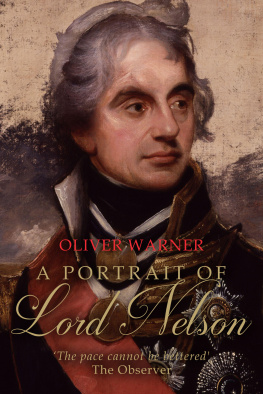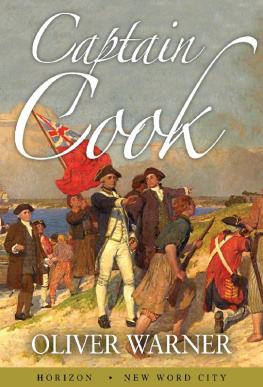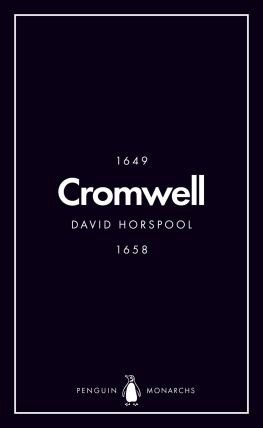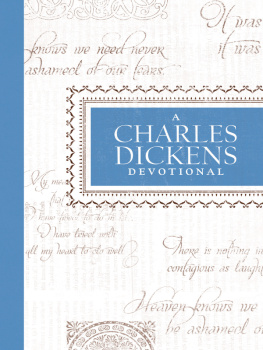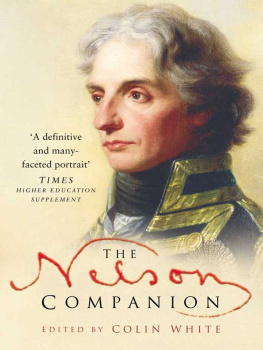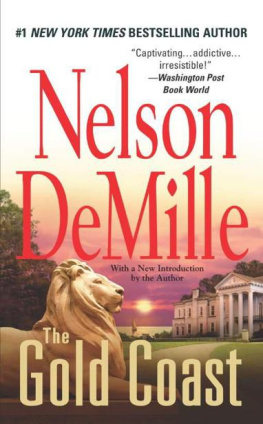A PORTRAIT OF LORD NELSON
OLIVER WARNER
Copyright Oliver Warner 1958
The right of Oliver Warner to be identified as the author of this work has been asserted by him in accordance with the Copyright, Designs and Patents Act, 1988.
First published in 1958 by Chatto & Windus.
This edition published in 2016 by Endeavour Press Ltd.
To
Elizabeth
Table of Contents
NELSONS RANKS
c. 1 January 1771 Midshipman (Aged 12)
24 September 1776 Acting Lieutenant (Aged 17)
9 April 1777 Lieutenant (Aged 18)
8 December 1778 Commander (Aged 20)
11 June 1779 Captain (Aged 20)
4 April 1796 Acting Commodore: second class (Aged 37)
11 August 1796 Commodore: first class (Aged 37)
20 February 1797 Rear-Admiral of the Blue (Aged 38)
17 May 1797 Knight of the Bath (Aged 38)
6 November 1798 Peer of the Realm (Aged 40)
14 February 1799 Rear-Admiral of the Red (Aged 40)
13 August 1799 Duke of Bront, Sicily (Aged 40)
1 January 1801 Vice-Admiral of the Blue (Aged 42)
22 May 1801 Viscount (Aged 42)
23 April 1804 Vice-Admiral of the White (Aged 45)
Nelson died in this rank, 1805 (Aged 47)
ACKNOWLEDGEMENTS
WITH a work protracted over several years, it is easier to assemble an intricate scaffolding of acknowledgements and notes than to reduce it: but many kindnesses call for thanks.
First I should like to make clear my debt to the Trustees and staff of the National Maritime Museum, for tireless courtesy in helping my researches and for leave to publish material in their care. I was fortunate in working at Greenwich when the Monmouth Manuscripts were being calendared there, and I am grateful to the Trustees of the Monmouth Museum of Nelson relics for allowing me to publish my gleanings, particularly from Nelsons letters to his wife. Great help has also been afforded me by the British Museum, the Bodleian, the Public Record Office, the Admiralty Library and other places I have haunted; while colleagues in the British Council, especially Mr L. Brander and those with whom I arranged an exhibition in honour of the 150th anniversary of Trafalgar, have given me much cause to thank them.
Among others to whom this book owes a debt are: the Society for Nautical Research; Mr James Champion and Mr Stephen Notcutt; Captain D. H. C. Cooper, R.N.; Lord Cottesloe; Mr Wilfred Granville; Mr Rupert Gunnis, who kindly lent me a transcript of a letter from Captain Harvey of the Temeraire ; Sir William Halliday; Mr P. Hepworth, City Librarian of Norwich, who, abetted by Messrs R. H. Mottram, W. O. Copeman and T. D. Copeman, persuaded me to attempt my first and last public speech; Mr F. W. Hawcroft; my kinsman Commander Edward Lee, R.N.; Commander H. P. Mead, R.N., Hon. Librarian of Lloyds; Sir Bruce Ingram; Mr Ruari McLean, with whom I descended into the strongholds of Somerset House to see the script of Nelsons prayer before Trafalgar; Mr Charles Mitchell, who cheered me by saying that nobody ever wrote badly about Nelson; Colonel J. Norton; Miss Carola Oman, author of the most attractive Nelson tapestry of modern times; Sir William Parker; the Rev. S. H. Heaton-Renshaw, for courteously giving information about Merton; Mr J. C. Sharp; Mr John Skidmore and the Society for Promoting Christian Knowledge; Mrs K. Suckling of Roos Hall, Beccles; Mr Peter Smithers, M.P.; Mr Maurice and Miss Rose Nelson Ward, for an entrancing glimpse of relics of Emma Hamilton; and Mr. F. Y. Thompson. My dedication gives only a faint indication of what I owe to my wife.
CHAPTER I LEGACY
Si monumentum requiris, circumspice
THE biographer of Nelson, like the classical tragedian, works upon material long and widely known. The subject of his attention is buried in St Pauls, beneath the centre of the most splendid dome in Northern Europe. In Trafalgar Square rises a memorial column, a copy of one belonging to the temple of Mars Ultor in Rome. Above it, a limestone statue faces towards the sea. Impressive as is the monument, it would not out-top the Victory , as her builders designed her. This, Nelsons flagship, preserved in her Trafalgar condition, though without her graceful spread of sail, is a principal feature of Portsmouth, where the admiral embarked for his final weeks at sea. Near that seaport, high on Portsdown Hill, stands the pillar erected by his companions-in-arms, subscribed for out of their prize-money.
Nelson memorials abound. The Church at Burnham Thorpe in which he worshipped as a boy has been restored in his memory. Much of the National Maritime Museum is illustrative of his exploits. There is an effigy of almost startling realism within the precincts of Westminster Abbey. Edinburgh and Dublin have their statues, as has many another city. His literature is greater than that of any other fighting seaman, and one of his noblest interpreters, Alfred Mahan, belonged to the American Navy.
Nelson has in fact suffered from much idolatry and some attack; and perhaps the greatest danger in any new venture in portraiture lies in distorting the trivial merely because it includes details hitherto unpublished. Proportion is the first essential, together with the need to recognize the fact that it is possible to re-create a vivid image entirely from Nelsons own surviving letters and despatches, so affectionately edited by Sir Harris Nicolas more than a century ago. Most personal judgements on any question affecting Nelsons career may be tested against what he himself said on the subject, and Nelson had an immense range of experience, a broad mind, and, for ah his occasional extravagances, a realists view of himself and of the world in general. The duty is to rediscover not perfection, but the extent of the mans genius.
Nelson himself remarked that all his portraits differed; but posterity has never complained of their variety, or indeed of their number. In his own time he had his special place in folk art: that of the jug, the mug, and the coloured glass-picture, as well as in that of the gallery, drawing-room, and portfolio. His appeal continues on more than one level. As Mahan wrote: So much being known, biographies of Nelson will contrast with one another, not in point of abundance of material, but as portraits do, according to the ability of the workman to reproduce, from the original before him, an impression of the man which shall be at once full, true, and living.
Wealth of information carries obligations with it. It is almost as unpardonable to be dull about Nelson as to be untruthful. He packed into his forty-seven years enough incident, conflict, and passionate feeling to suffice for a score of lesser and longer lives, but there is a sharp division of interest. While the seaman is impatient of the devotion to Lady Hamilton which coloured the last phase, the landsmen may well become restive at the thought of long stretches of watch and ward on the sea blockade which occupied so much of his energies. It is the final years which have greatest momentum. Nelsons life, the service thread of which broke in his thirties, rises to a climax with the Battle of St Vincent in 1797, and holds its high strain thereafter. Yet for five full years, between the ages of thirty and thirty-five, he lived in obscurity. This period belongs rather to family than to national history. After his years on half pay, there followed the violently contrasting activity in command of the Agamemnon , sudden glory, the loss of his right arm at the repulse of Teneriffe, and, from 1798 onwards, general fame.
With the Battle of the Nile, such a light fell upon Nelson as might have distressed a man of another stamp. He welcomed it. He loved being a hero. If there had been nothing for his conscience to stifle, his life henceforward could have held boundless pleasure, marred only by the frailties of his body and slowly failing sight.

